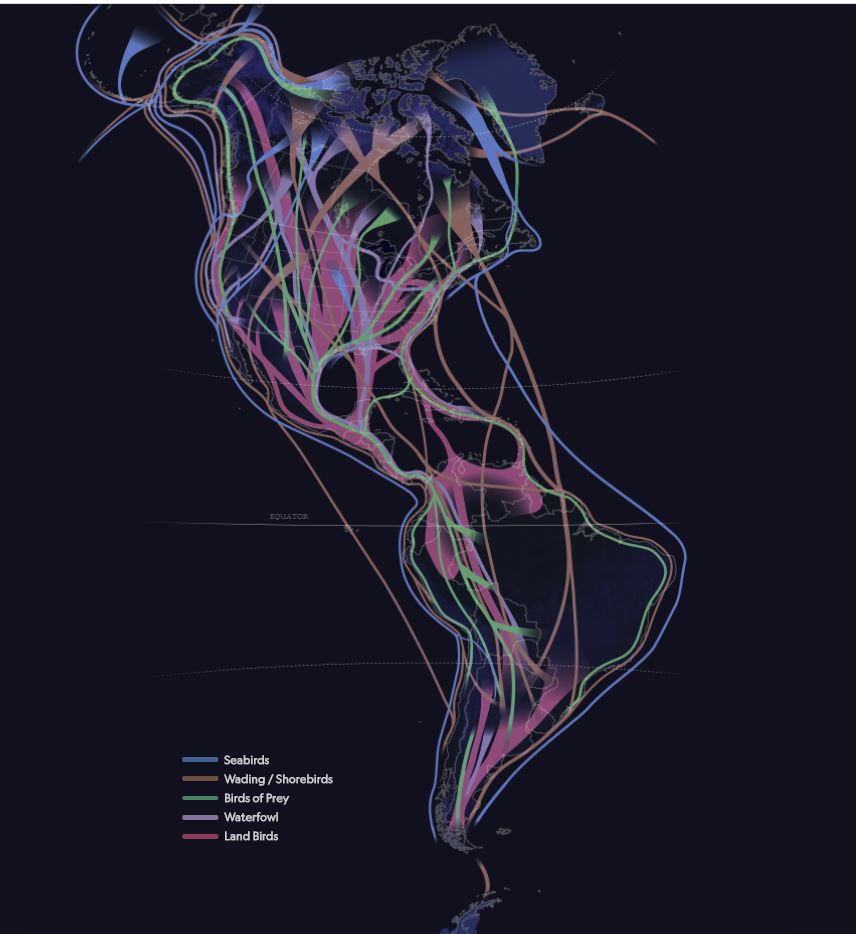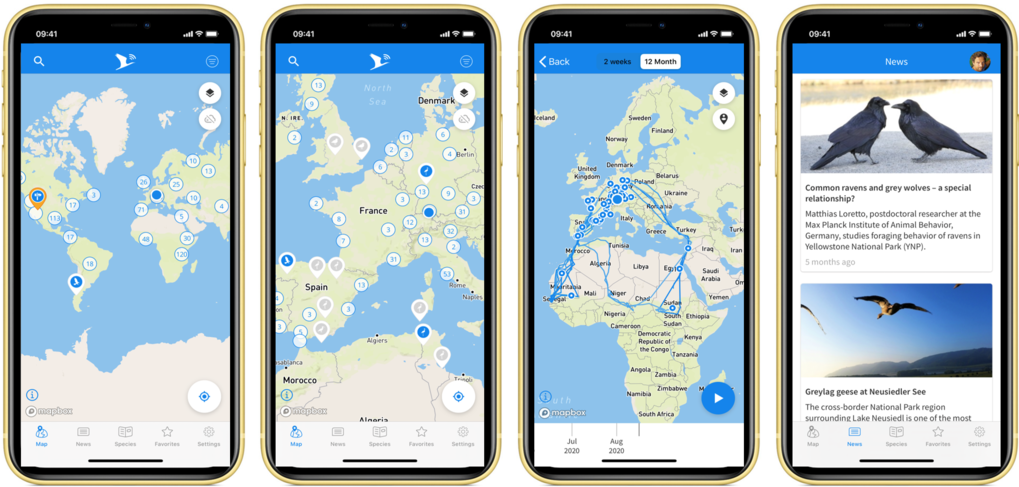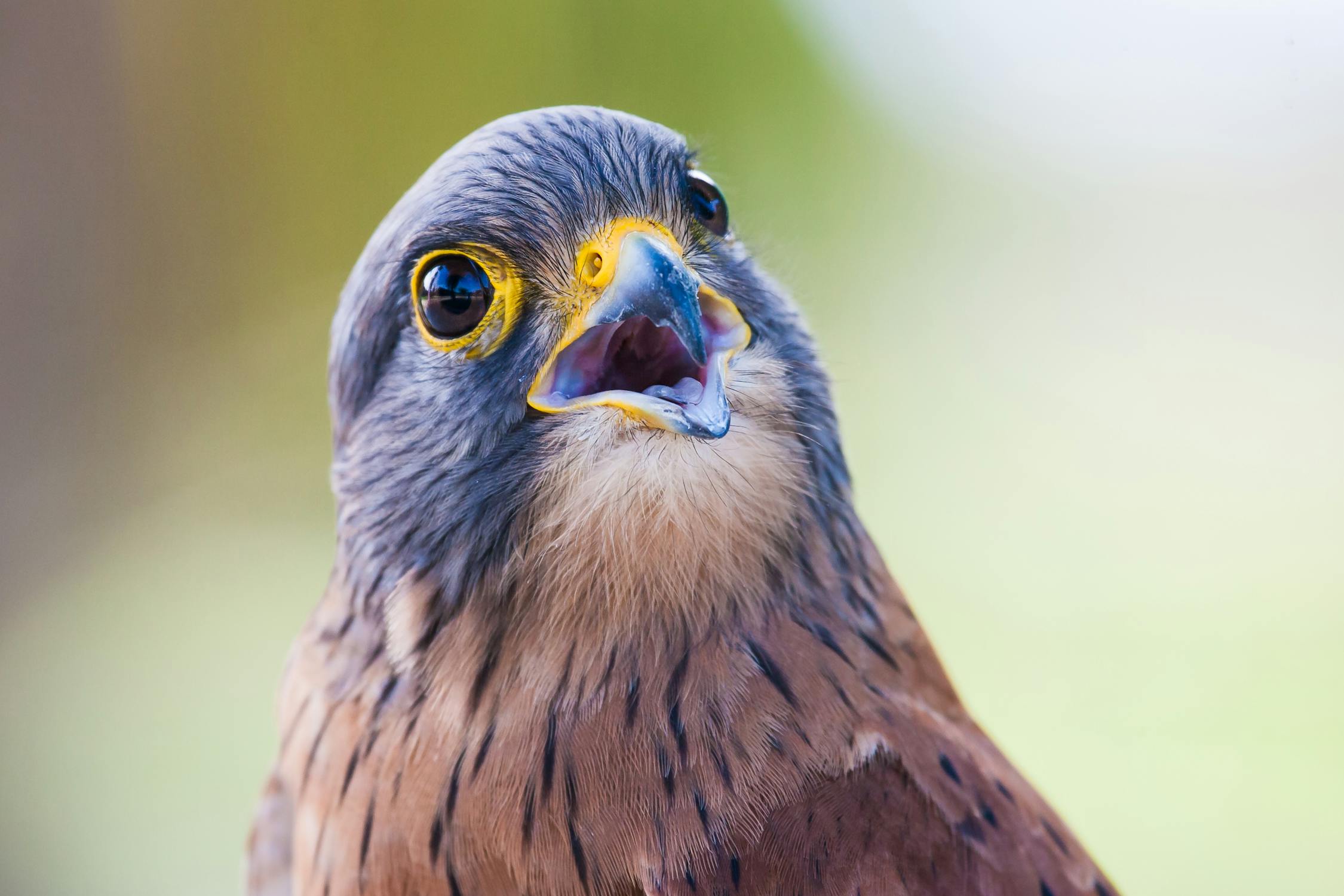Technological Migration: New Media and the Protection of Migratory Species
Wildlife GPS tracking is becoming more common practice, helping our understanding of migratory routes. ICARUS is a key driver within these technological developments, with new media playing a vital role in their strategy to help prevent the extinction of migratory species. What can we learn from them?

Migration Today
When a white stork flew back into Germany after Winter in 1822, a hunter made a fascinating discovery. The stork was pierced by an “iron-tipped wooden spear”. While this rather unlucky stork didn’t survive its encounter with the German hunter, it had survived an encounter with hunters in Central Africa, where the spear originated (MacDonald, 2015). This was one of the first indications for scientists about bird migration. Today, understanding migratory routes of animals is a vital component for science and conservation efforts (MacDonald, 2015). ICARUS (International Cooperation for Animal Research Using Space) are “working together to develop a satellite-based system to observe animals such as birds, bats and turtles” (The Internet of Animals, n.d.) . Unlike previous tracking technology, ICARUS trackers provide a much larger range of data collection, from physical conditions such as body temperature or oxygen levels, to being able to see the movements and locations of tagged animals in real time, which was not possible before.

Migration with New Media
For new media scholars, the most interesting aspect of ICARUS may be their data processing and databases. The real time data is processed with Movebank, a free, online database dedicated to facilitating the work of scientists around the world. The data obtained is then shared into their ‘Animal Tracker’ app. With the trackers real time ability, migratory species can be positioned with an accuracy of a few meters. This app fundamentally changes citizen science interactions. The improved technology and app platform allow citizen scientist to focus on observing the behavior of animals, as they can see where they are, which is not usually the case for nature based citizen science apps (MacDonald, 2015; Starr et al., 2014; Vercayie & Herremans, 2015). New media developments are an essential tool for conservation efforts.
With looming issues such as climate change, as well as 2020 being the “Super Year for Nature and Biodiversity” (IPBES; UNEP; CMS), technological advancements that can aid in conservation efforts are a critical tool. Especially for discussions within new media, these developments are of major interest. ICARUS highlights two critical aspects that new media scholars should take into consideration when it comes to conservation: firstly Nature 2.0, and secondly Slacktivism.

MPI of Animal Behavior/ MaxCine (The Internet of Animals, n.d.)
Nature 2.0
Back in 2016 one of the most fascinating social phenomena occurred, where augmented reality was brought into the mainstream. For a while, Pokémon Go seemed to be the primary reason why many young people decided to go outside. It seemed that the real and the imagined had finally completely merged. This is not a new concept for New Media by any means; “a popular trope in new media studies… that ‘meaningful distinctions’ between ‘lived and mediated reality are fading’” (Deuze as cited in Büscher, 2014, p. 738). Yet, it is exactly that statement that we need to take under scrutiny when it comes to conservation and nature.
As our world becomes more mediated, so does our nature. Nature 2.0 is a way of grounding this, and is defined as “‘a nature that is humanely produced (through conceptualization as well as activity) and that therefore partakes, but without being entirely, of the human’” (Biersack, as cited in Büscher, 2014, p. 727). Nature is moving online, and so is conservation. The Animal Tracker app from ICARUS demonstrates this. With its real-time data, animals become data points, little images on a screen. Any yet, we can see those data points in the real world, we can collect information about these data points, and thus gain more insight into measures that can be used to conserve these data points. However, this further demonstrates that there needs to be a clear distinction (when it comes to nature) between the mediated and the real, as by ignoring this, it “possibly renders mute the agency of nature in its variegated forms” (Büscher, p. 739). We must remember that conservation is an issue that needs results in the real world, not in the virtual.
Slacktivism
With developments in new media, a new space for politics opened (Kwak et al., 2018). Online political participation has been a hotly debated topic for a while (Kwak et al,. 2018; Theocharis, 2015), with a central focus being on the actual usefulness. From this, the term ‘slacktivism’ arose, defined as “feel-good online activism that has zero political or social impact” (Morozov as cited in Theocharis, 2015). Facebook, Twitter, Instagram, and other social media have given specific affordances (such as the like button) that perpetrate and promote slacktivism. Environmental and conservation efforts are also pulled into this, with the aforementioned Nature 2.0 including “sharing, liking and linking” (Büscher, 2014, p. 728). As new media affordances change, so will our interactions with the natural world. Apps such as Animal Tracker afford users the ability to become citizen scientists. An important new media debate emerges here; how far do affordances have to go to prevent slacktivism? How can the affordances benefit conservation efforts?
Animal Trackers real-time tracking and connection to Movebank provide new affordances to citizens who enter information about animal behavior. Scientists cannot be everywhere, nor do they often return to the same spots. A normal citizen, however, has the chance to return to similar spots often, whether it be their normal hiking path or a vacation spot (Seafarers, 2017, p. 2). As new media continues to bring change to affordances, it will be essential to keep an eye on how they influence nature, conservation, and slacktivism.

Our Future
In 2015, Jepson wrote that “the future of nature and conservation apps lies in their ability to harness the power of cloud computing and big data analytics” (p. 831). With ICARUS, we can see the start to this shift, as real time data and an app come together to bring more affordances to citizens, turning them into citizen scientists. It brings about two essential debates within New Media, that of Nature 2.0, and that of Slacktivism. With 1 million species expected to go instinct within the next 30 years (IPBES), it is high time that the “proliferation of the Internet and smartphone technology” lead to rapid changes in our interaction with nature and its conservation (Starr, 2014, p.1), whether through direct acts of citizen science or changes to our way of living.
References
Billions of Birds Migrate. Where Do They Go? (2020, June 05). Retrieved September 25, 2020, from https://www.nationalgeographic.com/magazine/2018/03/bird-migration-interactive-maps/
Büscher, B. (2016). Nature 2.0: Exploring and theorizing the links between new media and nature conservation. New Media & Society, 18(5), 726–743. https://doi.org/10.1177/1461444814545841
Jepson, P., & Ladle, R. J. (2015). Nature apps: Waiting for the revolution. Ambio, 44(8), 827–832. https://doi.org/10.1007/s13280-015-0712-2
Kwak, N., Lane, D. S., Weeks, B. E., Kim, D. H., Lee, S. S., & Bachleda, S. (2018). Perceptions of Social Media for Politics: Testing the Slacktivism Hypothesis. Human Communication Research, 44(2), 197–221. https://doi.org/10.1093/hcr/hqx008
MacDonald, H. (2015, May 17). Flight Paths. The New York Times. https://www.nytimes.com/2015/05/17/magazine/flight-paths.html
Seafarers, S. D., Lavender, S., Beaugrand, G., Outram, N., Barlow, N., Crotty, D., Evans, J., & Kirby, R. (2017). Seafarer citizen scientist ocean transparency data as a resource for phytoplankton and climate research. PLOS ONE, 12(12), e0186092. https://doi.org/10.1371/journal.pone.0186092
Starr, J., Schweik, C. M., Bush, N., Fletcher, L., Finn, J., Fish, J., & Bargeron, C. T. (2014). Lights, Camera…Citizen Science: Assessing the Effectiveness of Smartphone-Based Video Training in Invasive Plant Identification. PLoS ONE, 9(11), e111433. https://doi.org/10.1371/journal.pone.0111433
The internet of animals. (n.d.). ICARUS. Retrieved September 26, 2020, from https://www.icarus.mpg.de/28546/icarus-internet-of-animals
Theocharis, Y. (2015). The Conceptualization of Digitally Networked Participation. Social Media + Society, 1(2), 205630511561014. https://doi.org/10.1177/2056305115610140
Vercayie, D., & Herremans, M. (2015). Citizen science and smartphones take roadkill monitoring to the next level. Nature Conservation, 11, 29–40. https://doi.org/10.3897/natureconservation.11.4439